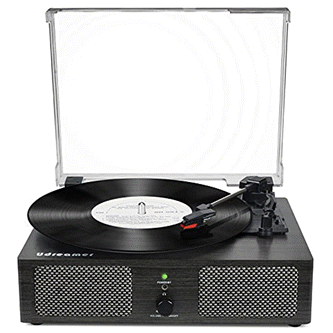2024-11-29 13:02:00
phys.org

Our bodies are remarkably skilled at adapting to changing environments. For example, whether amid summer heat or a winter freeze, our internal temperature remains steady at 37°C, thanks to a process called homeostasis. This hidden balancing act is vital for survival, enabling animals to maintain stable internal conditions even as the external world shifts.
But recent research from the Ikmi Group at EMBL Heidelberg shows that homeostasis can extend beyond internal regulation and actively redefine an organism’s shape.
The starlet sea anemone (Nematostella vectensis) possesses remarkable regenerative abilities. Cut off its head or foot, and it simply grows a new one. Slice it in half, and each piece becomes a complete, fully functional anemone.
While some regenerating animals like salamanders and fish focus on restoring lost parts in proportion to what remains, this sea anemone takes a different approach. It reshapes its entire body to maintain the same overall form, even if that means adjusting parts that weren’t injured. This feature is also seen in flatworms and other animals with whole-body regenerative capabilities.
“Regeneration is about restoring function after tissue loss or damage,” explained Aissam Ikmi, EMBL Group Leader and senior author of a new study in the journal Developmental Cell. “Most research studies mainly consider patterns and sizes in regeneration, but our findings show that maintaining shape is also crucial—and it’s something the organism actively controls.”
The discovery began when Stephanie Cheung, a doctoral researcher in Ikmi’s group, noticed something unusual. When a sea anemone’s foot was injured, Cheung observed not only cell division at the wound site but also unexpected cell division at the opposite end of the body—the mouth area. This suggested the anemone was sending signals across its entire body in response to the injury.
To investigate this, the research team used a technique called spatial transcriptomics combined with advanced imaging. This allowed them to see which genes were active in different parts of the anemone’s body during regeneration. What they found was surprising: the injury triggered molecular changes both near and far from the wound. Cells moved and tissues reorganized, effectively reshaping the entire body.

Interestingly, the extent of the body reshaping depended on the injury’s severity. Losing a foot caused mild changes, while the anemone being cut in half led to significant remodeling.
The team identified a family of enzymes called metalloproteases that became more active as more tissue was lost. These enzymes weren’t just working at the wound site; they were active throughout the body, helping to realign tissues.
“Metalloprotease activity has never been shown before in animals like this,” said Petrus Steenbergen, one of the study’s lead authors and an Ikmi Group Senior Research Technician.
“I had to design and optimize experimental conditions for Nematostella based on the sparse literature available from other species. This took some time, but the final results were very rewarding.”
The breakthrough came when the researchers realized that all these changes aimed to restore the anemone’s original shape. By measuring the aspect ratio—the ratio of length to width—they found that the anemone returned to its pre-injury proportions. So, even if the anemone became smaller after an injury, it maintained the same shape.
Discover the latest in science, tech, and space with over 100,000 subscribers who rely on Phys.org for daily insights.
Sign up for our free newsletter and get updates on breakthroughs,
innovations, and research that matter—daily or weekly.
“We were able to witness the body-wide coordination that drives this remodeling,” Ikmi explained. “This proportional response allows the anemone to restore its shape, highlighting how organisms like Nematostella interpret and respond to tissue loss in a way that’s scaled to the damage incurred.”
This research was a collaborative effort. Rik Korswagen’s team at the Hubrecht Institute in the Netherlands helped implement spatial transcriptomics in the sea anemone. Oliver Stegle’s team at EMBL Heidelberg and the German Cancer Research Center (DKFZ) contributed bioinformatics expertise and the statistical methods needed to deal with the spatial gene expression data.
“It was a pleasure to puzzle out the findings of the study together by uniting the team’s expertise in data analysis and cell biology,” said Tobias Gerber, another of the study’s lead authors. “This work was a truly collaborative journey, and I am glad I was part of it.”
Looking ahead, Ikmi and his team are excited to explore new questions. “The next big question is why maintaining shape is so important,” Ikmi said. “And how does the organism sense its own shape? How does it know what it currently looks like?”
With the remarkable starlet sea anemone as their model, they’re eager to uncover more secrets about how organisms heal and maintain balance.
More information:
Stephanie Cheung et al, Systemic coordination of whole-body tissue remodeling during local regeneration in sea anemones, Developmental Cell (2024). DOI: 10.1016/j.devcel.2024.11.001, www.cell.com/developmental-cel … 1534-5807(24)00666-X
Provided by
European Molecular Biology Laboratory
Citation:
Sea anemone study shows how animals restore ‘shape’ following major injury (2024, November 29)
retrieved 29 November 2024
from https://phys.org/news/2024-11-sea-anemone-animals-major-injury-1.html
This document is subject to copyright. Apart from any fair dealing for the purpose of private study or research, no
part may be reproduced without the written permission. The content is provided for information purposes only.
Enjoy the perfect blend of retro charm and modern convenience with the Udreamer Vinyl Record Player. With 9,041 ratings, a 4.3/5-star average, and 400+ units sold in the past month, this player is a fan favorite, available now for just $39.99.
The record player features built-in stereo speakers that deliver retro-style sound while also offering modern functionality. Pair it with your phone via Bluetooth to wirelessly listen to your favorite tracks. Udreamer also provides 24-hour one-on-one service for customer support, ensuring your satisfaction.
Don’t miss out—get yours today for only $39.99 at Amazon!
Support Techcratic
If you find value in Techcratic’s insights and articles, consider supporting us with Bitcoin. Your support helps me, as a solo operator, continue delivering high-quality content while managing all the technical aspects, from server maintenance to blog writing, future updates, and improvements. Support Innovation! Thank you.
Bitcoin Address:
bc1qlszw7elx2qahjwvaryh0tkgg8y68enw30gpvge
Please verify this address before sending funds.
Bitcoin QR Code
Simply scan the QR code below to support Techcratic.

Please read the Privacy and Security Disclaimer on how Techcratic handles your support.
Disclaimer: As an Amazon Associate, Techcratic may earn from qualifying purchases.













































![[Download] Intuitive 3D Modeling | Abstract Sculpture | FLIGHT | DANA KRYSTLE](https://techcratic.com/wp-content/uploads/2025/08/1755630966_maxresdefault-360x180.jpg)








































![[DEBUT COVER] Intergalactic Bound – Yunosuke / CircusP [MIKU EXPO 10th]](https://techcratic.com/wp-content/uploads/2025/08/1755598927_maxresdefault-360x180.jpg)












